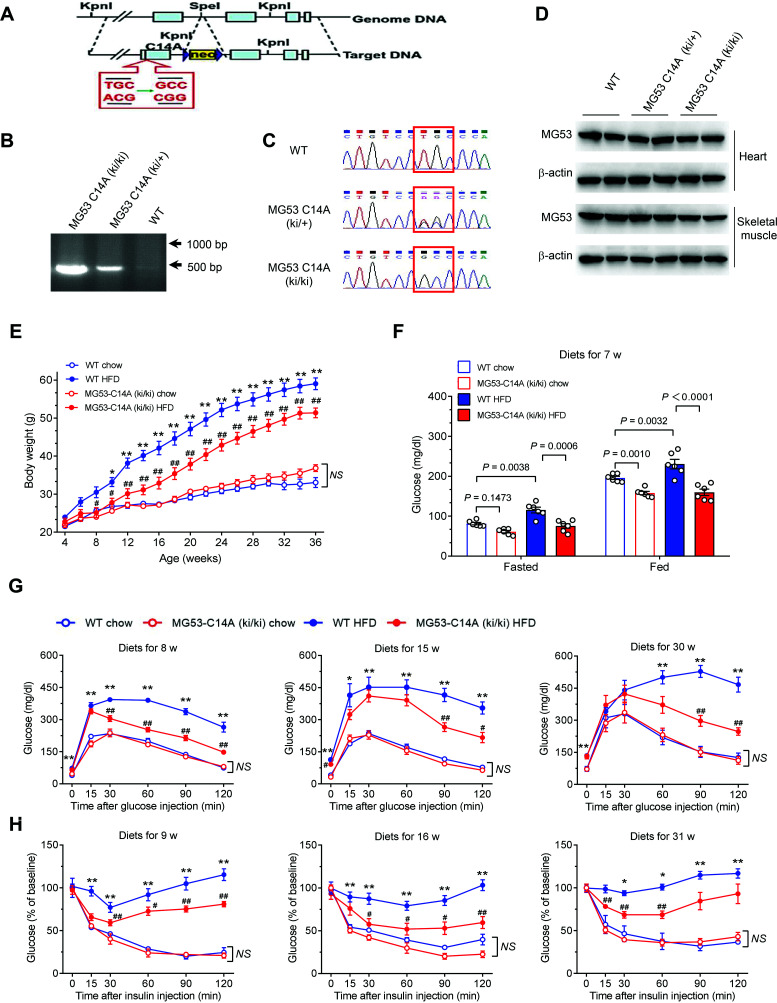Figure 5.
MG53-C14A knock-in mice are resistant to HFD-induced obesity, hyperglycemia, glucose intolerance, and insulin resistance. A: Schematic diagram showing the targeting strategy of MG53-C14A knock-in mice. B and C: Representative genotyping results, including electrophoretogram (B) and sequencing (C), of WT littermates and heterozygote MG53-C14A (ki/+), and homozygote MG53-C14A (ki/ki) mice. D: Representative Western blots of MG53 in the heart and skeletal muscle of MG53-C14A (ki/ki) and MG53-C14A (ki/+) mice and their WT littermates. β-actin served as a loading control. E–H: The metabolic features of homozygous MG53-C14A knock-in (MG53-C14A [ki/ki]) mice and their WT littermates administered chow diet or HFD from 4 weeks of age. For the number of animals used in each study, the order of the groups is listed as following: WT chow, MG53-C14A (ki/ki) chow, WT HFD, and MG53-C14A (ki/ki) HFD. Body weights during diet intervention for 32 weeks (n = 5, 5, 10, and 7, respectively) (E), fasted and fed blood glucose levels after diet intervention for 7 weeks (n = 6 for each group) (F), glucose tolerance tests after diet intervention for 8, 15, and 30 weeks (n = 6, 6, 8, and 8, respectively) (G), and insulin tolerance tests after diet intervention for 9, 16, and 31 weeks (n = 4, 4, 10, and 7, respectively) (H). All data are presented as mean ± SEM. E–H: Statistical analysis was conducted by two-way ANOVA with Tukey multiple comparisons test. E, G, and H: *P < 0.05, **P < 0.01 for WT HFD vs. WT chow; #P < 0.05, ##P < 0.01 for MG53-C14A (ki/ki) HFD vs. WT HFD. NS, not significant.

